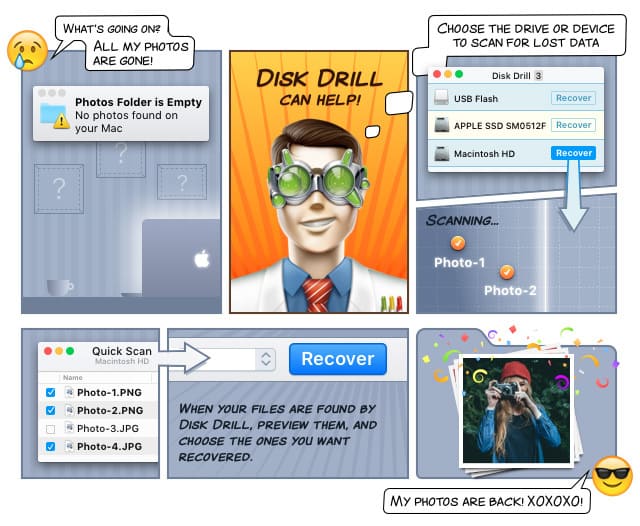What Is DV File Format?

Characteristics and Uses
A Digital Video (DV) file is a file created by a digital camera, and saved using a standard raw format. A DV file is formed of Digital Interface Blocks (DIF), each of 80 bytes. DIF blocks can contain audio, video and metadata. DIF blocks can be stored as computer files in raw form, or wrapped in file formats. The blocks are multiplexed into 150-block sequences. A video frame contains 10 or 12 sequences. In tapes, each track contains a sequence. The resulting data rate is 25 Mbits/s.<br/ ><br/ >A DV file uses lossy compression of video. Audio is stored uncompressed. The video is compressed on a frame by frame base, using an algorithm based on the discrete cosine transform. Video interlaced scanning is done with a frequency of 13.5 MHz, resulting in 480 and 576 scan lines for the 60 Hz system and the 50 Hz system respectively. In both cases the active area contains 720 pixels per scanline, with 704 for content and 16 for blank on the sides. Audio can be stored in 16-bit Linear PCM stereo at 48 kHz sampling rate. Alternatively, it can also be stored in four non-linear PCM channels at 32 kHz sampling rate. The specification also supports 16-bit audio at 44 kHz. However, the 48 kHz stereo mode is used most frequently. Originally developed for tape recording, it can be used to store material in optical discs, solid state flash memory cards and hard disk drives.
Brief History
The DV file format specification was developed in 1995 and documented as IEC 61834. It is known as Blue Book and intended for recording to tape. The spec publication is sold by IEC and ANSI. In 2003 it was complemented by the HDV standard, which uses the same tape format, but with different video codec. Some companies have created their own improved proprietary versions of DV files. For example, Panasonic developed the DVCPRO standard in 1995 and the DICPRO50 in 1997. Sony created the DVCAM file format in 1996.
Programs That Open DV Files
Windows:
- File Viewer Plus
- Apple QuickTime Player
- Adobe Flash Professional CC
- Roxio Creator NXT Pro 5
- CyberLink PowerDirector 15 Ultra
- CyberLink PowerDVD 16
- Microsoft Windows Movie Maker
- VideoLAN VLC media player
- MPlayer
Mac:
- Apple QuickTime Player
- Apple iMovie 10
- Adobe Flash Professional CC
- Eltima Elmedia Player
- Roxio Toast 15
- Roxio Popcorn
- VideoLAN VLC media player
- MPlayer
Linux:
- VideoLAN VLC media player
- MPlayer
How to Recover Deleted DV Files
The DV file format has been in the market for a long time. Many of us have old memories saved in this format. What can we do when we have made an unintended delete and we want to recover DV files? Fortunately, we have Disk Drill, a file recovery application available for free!
It is really easy to perform a DV file recovery with this app. All that is necessary is to follow a few steps:
- Download the Disk Drill installer from our website.
- Install Disk Drill by clicking on the downloaded installer and following the given indications.
- Open Disk Drill. You will see that the app shows all connected digital devices. Select the one where you want to do your DV recovery. Disk Drill can work on a multitude of different devices, such as internal and external hard drives, USB flash drives, memory cards, iPhones, and many more.
- In order to narrow the search, go to the menu, select “Preferences”, and then choose “dv” from the set of file formats available.
- Click on the “Recover” button. Disk Drill will now scan your drive searching for all DV files still present on your device.
- If you want to pause the session, save it and return later, simply click on the buttons “PAUSE” and “SAVE”. Similarly, you can also cancel the scan by clicking on “CANCEL”.
- Once the scan is finished, Disk Drill shows the results in a window. If there are too many files present, you can narrow your search by filtering according to size and date. Simply select the file or files you were looking for and restore them to a folder of your choice.
Your DV file recovery is done!

How to use Image Files to Recover DV Files
An additional advantage of using Disk Drill is its capacity to create image files. These files are a bit-by-bit copy of the original source. Thus, they preserve all the data on the device. Using image copies of the device is a good practice, as you can make mistakes in your DV file recovery, without damaging the original device. This is a standard practice in forensics, as it also allows for repeatability of analysis. Another great thing about Disk Drill is that it saves image files using some of the most common formats, such as .iso and .img. These files can later be opened with many other tools available on the market.
